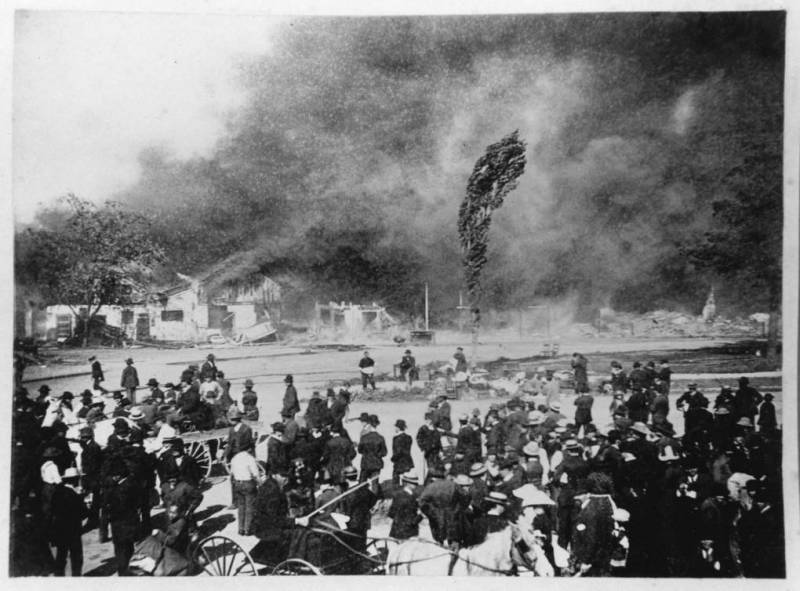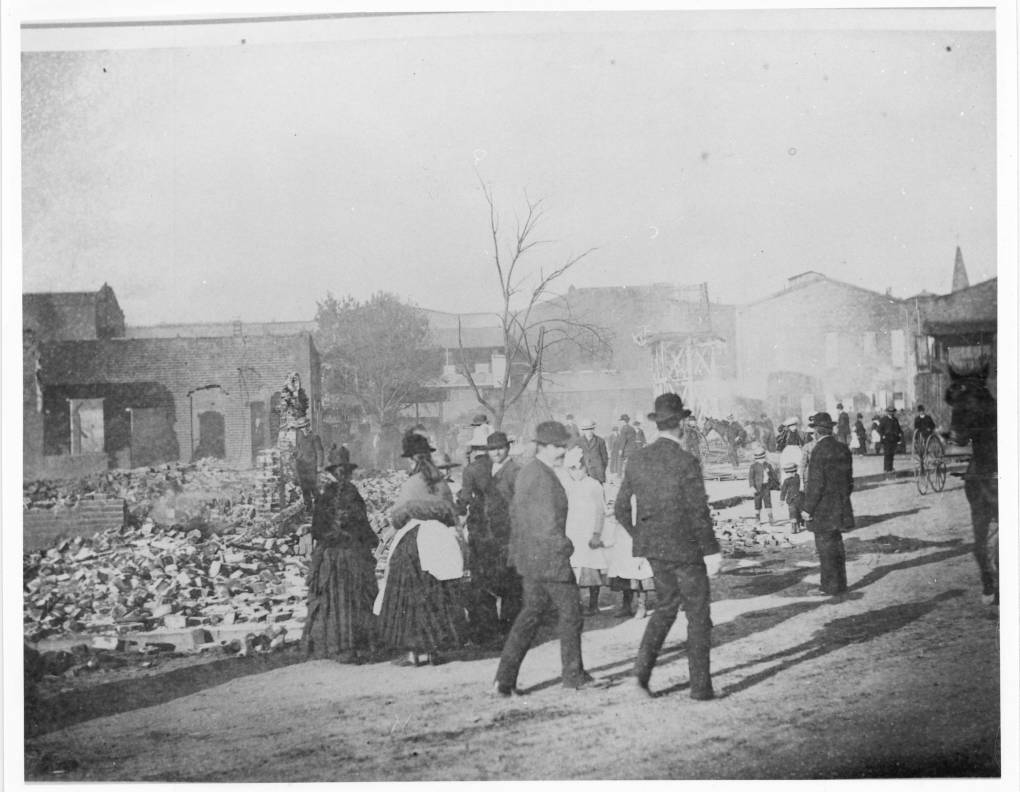The city of San José once was home to one of the largest Chinatowns in California. In the heart of downtown, it was the center of life for Chinese immigrants who worked on nearby farms and in orchards.
San José Formally Apologizes for the 1887 Burning of the City's Chinatown


More than a century after arsonists burned it to the ground in 1887, the San José City Council approved in a unanimous vote a resolution on Tuesday afternoon to apologize to Chinese immigrants and their descendants for the role the city played in “systemic and institutional racism, xenophobia, and discrimination.”
San José, with a population of over 1 million, is the largest city in the country to formally apologize to Chinese communities for its treatment of their ancestors. In May, the city of Antioch apologized for its mistreatment of Chinese immigrants, who built tunnels to get home from work because they were banned from walking the streets after sundown.
“It’s important that every generation express their own contrition,” San José Mayor Sam Liccardo said at Tuesday’s meeting. “We’ve seen [this history] repeat itself in our own community of San José.”
The apologies come amid a wave of attacks against Asian and Asian American communities since the start of the pandemic last year. A resolution ceremony, which will include a space for members of the Chinese American community to respond to the apology, is set to take place at noon on Wednesday.
Other cities, specifically in the Pacific Northwest, have issued apologies in decades past. California, too, apologized in 2009 to Chinese workers and Congress has apologized for the Chinese Exclusion Act, which was approved in 1882 and made Chinese residents the targets of the nation’s first law limiting immigration based on race or nationality
The city had five Chinatowns, but the largest one was built in 1872. But in 1877, The San José Mercury News featured front page testimony from city leaders including the fire and police chiefs, the street commissioner and the mayor with one message: Chinatown must go.
“It was of their opinion that the general condition of the locality in a sanitary point of view could not be worse and in an aesthetic or moral sense, it was revolting,” the testimony read.
Then-Mayor Charles Breyfogle and the city council voted unanimously to get rid of the Second Market Street Chinatown. But before any official action was taken, the Chinatown was burned down. That made it the third Chinatown in San José that residents burned down.
According to Tuesday’s resolution, hundreds of homes and businesses were destroyed and around 1,400 people were displaced.
“An apology for grievous injustices cannot erase the past, but admission of the historic wrongdoings committed can aid us in solving the critical problems of racial discrimination facing America today,” the resolution reads.
Chinese immigrants started coming to California in large numbers during the Gold Rush in the mid-1800s. They worked in mines, built the transcontinental railroad, toiled in farms and helped develop the abalone and shrimp industries. By 1870, there were about 63,000 Chinese people in the United States, 77% of them residing in California, according to the resolution.
Chinese immigrants faced racism and were forced out of towns. They were denied the right to own property, marry white people and attend public schools. They also were subjected to violence and intimidation and denied equal protection by the courts.
In San José, an Episcopal church where Chinese immigrants attended Sunday school was burned to the ground, Chinese laundries were condemned based on being housed in wooden buildings and the first state convention of the Anti-Chinese League was held in 1886, according to the resolution.
Connie Young Yu, a historian and author of “Chinatown, San Jose, USA,” said her grandfather was a teenage refugee from the 1887 fire. Her father was born in the last existing Chinatown built in San José. The community was established in a new location with the help of German immigrant John Heinlen, despite threats to his life. But that Chinatown, known as Heninlenville, disappeared after the Chinese population dwindled.
Yu said the official apology gives her an “enormous sense of reconciliation and a sense of peace.”
“This is beyond an apology. It is taking responsibility, which is a beautiful thing to me,” Yu added.
Gerrye Wong, who helped found the Chinese Historical and Cultural Project in San José, said she, Yu and other community members will formally accept the apology at a ceremony Wednesday near the Fairmont Hotel in downtown San José, which was built where the destroyed Chinatown once existed. In 1987, city officials dedicated a plaque at the site to mark the fire’s 100th anniversary.
Wong, a retired teacher, said the apology from the 10th largest city in the country is a teaching moment because this history was not in textbooks or taught in schools.
“As a fourth-generation Chinese American myself, I didn’t know any of this and Chinese people never talked about it,” she said.
“In this anti-Asian hate environment that we see today, it’s a great step forward because it will bring attention to not only our hardships but also what Chinese communities have contributed to this country,” she added.
This post includes reporting from KQED’s Adhiti Bandlamudi and Carlos Cabrera-Lomelí.
